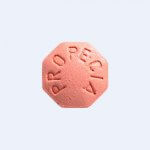It seems that each month there is a growing public noise about the new pharmaceuticals and innovative drugs which are highly priced. Moreover, newspapers, journals and magazines as well as professional literature are raising outcry over a substantial price hike for an existing products that are in the markets for many years.
Is such a public uproar in response to a higher price of a new or existing drug justified? May policy makers and taxpayers as well as the public at large are questioning and even blaming the whole pharmacy sector for drug high price and simultaneously forgetting the value that this sector brings health to hundreds of millions? How those who directly involved in the marketplace of pharmaceuticals products react on the blame that prescription drug costs rose faster than ever?
Manufacturers of drugs start to lobby their product more actively and aggressively and place a lot of commercials which advertise direct sales to consumers. For initiating of the highly–priced therapy with innovative products they put a more emphasis on selected providers and/or provider groups. Managers of pharmacy settings either offer rebates or remove the drug in question from their formulary and help patients with therapeutic interchange.

Meantime and contrary to the public opinion, quite recently published data on pricing of American pharmaceutical products had showed that in the structure of total health care expenses in the United States the cost of retail outpatient prescription drug is only 10 percent and this share is approximately the same as it was 55 years ago. The most important finding is that the outright majority of the Americans and Canadians can afford to buy contemporary drugs which value potential is far exceeded their counterparts produced in 1960s. By the statistics, in 2016 in the United States local physicians dispensed over 3 billion prescriptions. From this amount, more than 80 percent had been dispensed for generic drugs. And cost of the unit of prescribed generic, in average, was less than 20 US dollars.
However, the generic drugs are not always provided the same results as it is expected and there is one key reason of product’s failure. This reason is not optimal use of the drug use because of a lack of patient understanding and lack of adequate titrations, or inability of physician to prescribe a proper dosage and to monitor dosing, or different and contradicting regimens and poor administration which causes the adverse effects, and most importantly, the patient’s inability to pay.
It is true that generally affordable drugs are prescribed to most patients in the United States and Canada. However, patients are not fully realized that drugs – both brand name and generics – are lacking to deliver better health and fulfill their promise. In all developed countries there is still important gap in the health care system and governments do not do anything to narrow this gap as they are investing practically nothing to develop medication optimization programs. By different estimates, if only in the United States, from $300 billion annual expenditure for medication procurement, 1 percent will be spent to optimize the use of those drugs, a huge amount of the community money will be saved and much more health be gotten by each patient for every penny of drug purchase.
Meantime, it should be noted that the brand name drugs are always higher priced which explained and justified by the huge expenditure to research, develop, test, approve, manufacture, promote, advertize and finally, to get a new drug to a market. However, remember that research cost, for example, in the United States, is included into the retail price of the new drug and by this way the country supports pharmaceutical research across the world. In recent years there had been some efforts to change or cancel the policy of worldwide research support but it is still continues and the main reason why such a support persists is the dramatic drop of the drug price as its generic equivalent enters the marketplace.
However, for the last several years due to the consolidation of drug manufacturers the prices of generics had been escalating also and this generic price inflation hits many community pharmacy settings as prices for purchasing of generics are frequently far exceeded the reimbursement which benefit managers of the pharmacy setting receive.
The most popular questions about generic medications You can find here https://canadianhealthcaremallrx.com/faq
To remedy the problem the parties in concern including drug makers, community pharmacists, patient’s physicians and pharmacy benefit managers have to closely collaborate and such collaboration is occurring now. For example, pharmaceutical companies are disclosing to the pharmacy directors information on drug’s potential costs before it appears in the marketplace. Moreover, drug makers are undertaking drug testing and trials to show and prove its safety and cost effectiveness for the particular groups of patients.
From the other side, a pharmacy benefit managers are looking for drug makers whose product pricing policy is based on how well the drugs work. The collaboration will bring a more transparent pricing structure of the pharmaceutical industry, increase efficacy of the generic drugs, promptly develop a more cost–effective drug regimen, and deliver effective and personalized drug therapy. In addition, a close collaboration of all players of the pharmaceutical market will enable a sustainable health care system which is critically important when the United States, Canada and EC are facing with the reality of an aging and increasingly chronically ill population. It should be emphasized that the national health expenditures is projected to increase in the United State at a rate 1.3 percentage points higher every year than gross domestic product and this means that for the next 18 years, more than 40 percent of the national income gains will be devoted to health care spending, not to primary or secondary education, or transportation, or roads and other infrastructure, food and shelter. To ensure that national health expenditures will be funded properly, the economy of any country as large as the United States must grow at a more rapid pace that health spending.
Best regards, Canadian Health&Care Mall Team canadianhealthcaremallrx.com



